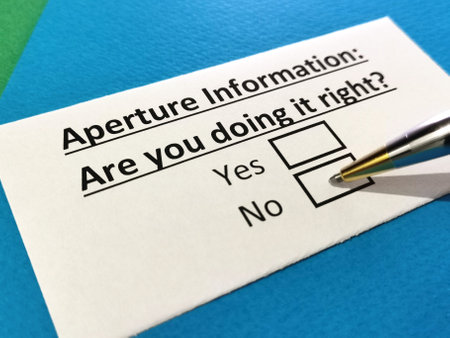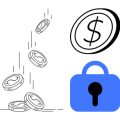Introduction to No-Code Prototyping in the U.S.
No-code prototyping has become a game-changer in the American startup world. Over the past few years, easy-to-use no-code tools have made it possible for founders, product managers, and even non-technical team members to turn their ideas into working prototypes—without needing to write a single line of code. These tools are empowering a new generation of entrepreneurs across the United States, helping them test concepts and gather real feedback faster than ever before.
The Rise of No-Code Tools
No-code platforms like Webflow, Bubble, Glide, and Airtable have grown rapidly in popularity. They offer drag-and-drop interfaces and ready-made templates that allow anyone to build web apps, mobile apps, and interactive websites. This means startups can quickly visualize their ideas and make changes on the fly, all without waiting for scarce developer resources.
Why U.S. Entrepreneurs Are Turning to No-Code
There are several reasons why no-code prototyping is taking off in America:
| Reason | Description |
|---|---|
| Speed | Build and iterate on prototypes much faster than traditional development. |
| Cost-Effective | Saves money by reducing reliance on expensive engineering teams early on. |
| Accessibility | Makes innovation possible for people without coding backgrounds. |
| User-Centric Testing | Easily gather feedback from real users before committing major resources. |
| Flexibility | Pivots and changes can be made instantly as new insights come in. |
No-Code’s Role in the American Startup Ecosystem
No-code prototyping fits perfectly into the fast-paced culture of U.S. startups. Here, speed and adaptability are everything. Founders want to validate their ideas with real users as soon as possible, so they can avoid investing time and money into products nobody wants. With no-code tools, early-stage companies can launch MVPs (Minimum Viable Products), collect user feedback, and make data-driven decisions—all before hiring a full engineering team or raising big rounds of funding.
2. Cultural Expectations of User Testing in the U.S.
Understanding American Attitudes Toward Feedback
In the United States, user testing is much more than just observing how someone uses a product. It’s about creating an open space where honest feedback is encouraged and valued. Americans generally see feedback as a tool for improvement—not criticism. This means testers are often ready to share what they like, what confuses them, and even what frustrates them without holding back.
Communication Styles During User Testing
When conducting user testing sessions with American participants, it’s important to recognize typical communication styles:
| Communication Style | Description | What to Expect in Testing |
|---|---|---|
| Directness | Americans tend to be straightforward and clear when sharing their thoughts. | Expect users to say exactly what they think about your no-code prototype, whether positive or negative. |
| Openness | There’s a strong culture of openness and sharing opinions. | Participants may offer suggestions for improvement, not just point out problems. |
| Politeness with Honesty | While feedback is direct, it’s usually delivered politely and constructively. | You’ll hear honest reactions, but in a way that aims to help you improve your product. |
Why Direct and Honest Feedback Is Valued
The U.S. startup ecosystem moves fast. Teams rely on real, actionable feedback to iterate quickly. That’s why being honest—both about what works and what doesn’t—is seen as helping, not hurting. This approach leads to better products because issues are spotted early and solutions can be tested before launch.
No-code prototypes make it easy for American testers to interact with your idea without technical hurdles. This lowers barriers, encouraging even more open feedback from people of all backgrounds.
If you’re launching a product or service in the U.S., embrace this culture by asking clear questions, welcoming all feedback, and showing appreciation for honesty. It will help you build stronger products that meet real user needs.

3. Strategies for Recruiting Test Users in the U.S.
Effective Channels and Methods for Finding Test Users
When you’re building a no-code prototype, finding the right users to test your idea is crucial. In the U.S., there are several effective channels you can use to connect with potential testers:
| Channel | Description | Tips |
|---|---|---|
| Social Media Groups | Platforms like Facebook Groups, LinkedIn, and Reddit have active communities for almost every niche. | Search for groups related to your product’s industry and join conversations before pitching your prototype. |
| Meetup.com & Eventbrite | Find local meetups or online events where your target users hang out. | Attend relevant events and network with attendees who might be interested in testing. |
| University Campuses | Colleges often have student organizations and entrepreneurship centers open to new ideas. | Reach out to clubs or professors who may help recruit students as testers. |
| UserTesting Platforms | Websites like UserTesting.com or TryMyUI offer access to a large pool of U.S.-based testers. | Select demographics that match your ideal user profile for more relevant feedback. |
| Email Newsletters | Partner with newsletters in your industry or local community updates. | Offer an incentive for readers to participate in your user test. |
Leveraging Local Online Communities
The U.S. has many vibrant online communities where people are eager to try new products. Here are some ways to leverage them:
Reddit Subreddits
Subreddits like r/startups, r/Entrepreneur, or topic-specific subs (e.g., r/edtech for education tools) are great places to find enthusiastic testers. Always read the rules before posting—some subreddits have strict guidelines about self-promotion. Engaging with the community first by commenting and providing value will increase your credibility when you share your prototype.
Facebook & Discord Groups
Niche Facebook and Discord groups often welcome discussions about new tools or apps. Search for groups by interest area (like “Fitness Tech Startups” or “Parenting Apps USA”) and ask admins if you can invite members to test your prototype. Be transparent about what you’re looking for and how their feedback will help shape the product.
Nextdoor App
If your prototype is location-based or serves a local community, Nextdoor is a popular neighborhood app in the U.S. Post in local forums inviting neighbors to test your app, especially if it solves a problem they care about.
Best Practices for Outreach in the U.S. Market
- Personalize Your Message: Americans appreciate directness but also value personalization. Use people’s names and mention why their feedback matters specifically to you.
- Be Transparent: Clearly state that you’re seeking feedback on an early-stage prototype and explain how their input will make a difference.
- Offer Incentives: Small incentives like digital gift cards, swag, or early access can boost participation rates. Even a public thank-you on social media goes a long way!
- Follow Up: After someone tests your product, follow up with a thank-you note and share any changes you’ve made based on their input. This builds goodwill and encourages them to stay engaged as future advocates.
- Respect Privacy: Assure participants that their information will be kept confidential and only used for improving the product—this is especially important in the U.S., where privacy concerns are taken seriously.
User Recruitment Checklist for the U.S.
| Step | Description |
|---|---|
| Create a clear value proposition for testers | Tell users what’s in it for them if they help out |
| Select the right channels (social media, local communities, etc.) | Match channels with your target audience’s habits |
| Diversify outreach methods (posts, emails, DMs) | Avoid relying on just one approach; mix it up for better results |
| Prepare simple onboarding instructions | Make it easy for users to get started with minimal hassle |
| Plan for quick feedback collection (surveys, calls) | Simplify the process so users aren’t overwhelmed or confused |
| Acknowledge all participants promptly | Saying thanks goes a long way in building trust and loyalty! |
The right recruitment strategy can make all the difference as you gather early feedback on your no-code prototype in the American market. By using these channels and best practices, you’ll set yourself up for valuable insights and stronger product-market fit down the line.
4. Best Practices for Conducting User Tests with No-Code Prototypes
Structuring Feedback Sessions for U.S. Testers
When organizing user tests in the U.S. using no-code prototypes, its important to keep things clear and friendly. American testers often appreciate a relaxed but purposeful environment. Here are some steps to help you set up feedback sessions effectively:
| Step | Details |
|---|---|
| 1. Brief Introduction | Start with a casual welcome, introduce yourself, and explain the goal of the session in simple terms. |
| 2. Set Expectations | Let testers know what you want to learn, how long it will take, and assure them theres no right or wrong answer. |
| 3. Walkthrough Demo | Give a short demo of the no-code prototype so testers feel comfortable navigating it. |
| 4. Guided Tasks | Ask testers to complete specific tasks while talking through their thoughts (think-aloud method). |
| 5. Collect Open Feedback | Encourage honest opinions and reassure testers that all feedback is valuable, even if its critical. |
| 6. Wrap Up | Thank testers for their time, explain next steps if any, and let them know how their input will be used. |
Cultural Alignment: Tips for Engaging U.S. Testers
- Be Direct but Friendly: Americans value straightforward communication, so avoid overly formal or indirect language.
- Acknowledge Individuality: Show respect for diverse opinions and backgrounds—customize your approach when needed.
- Use Familiar References: Incorporate examples or scenarios that reflect typical U.S. experiences or brands.
- Keep Things Light: Small talk at the start helps build rapport and puts people at ease.
- Respect Time: Start and finish on schedule—punctuality matters in American business culture.
Ensuring Meaningful Insights from User Feedback
The quality of insights depends on how you gather and interpret feedback. Here are some quick guidelines:
- Ask Open-Ended Questions: Instead of yes/no questions, use prompts like “What did you find confusing about this screen?” or “How would you expect this feature to work?”
- Diversify Your Testers: Include users from different regions, backgrounds, and age groups within the U.S. to get varied perspectives.
- Avoid Leading Questions: Let testers express their natural reactions instead of nudging them toward certain answers.
- Follow Up Promptly: If something is unclear during the session, ask follow-up questions right away while its fresh in their mind.
- Synthesize Feedback: After sessions, look for patterns or repeated issues—these highlight real user needs or pain points.
User Testing Session Checklist (U.S.-Focused)
| ✓ Prepare a clear session agenda | ✓ Use plain English with minimal jargon |
| ✓ Welcome testers warmly | ✓ Encourage honest feedback without judgment |
| ✓ Keep sessions on time | ✓ Thank participants and explain next steps |
5. Iterating Based on Early Feedback: Lessons from the American Market
How to Interpret and Prioritize User Input
When testing your no-code prototype with American users, you’ll likely receive a mix of suggestions, complaints, and feature requests. It’s important to interpret this input thoughtfully. Not all feedback is created equal—some insights reflect genuine pain points, while others might be personal preferences. Start by categorizing the feedback:
| Type of Feedback | Example | Action |
|---|---|---|
| Critical Issues | “The login doesn’t work.” | Fix immediately; blocks usability. |
| Usability Suggestions | “It’s hard to find the settings button.” | Consider UI/UX improvements. |
| Nice-to-Have Features | “It would be cool if it had dark mode.” | Add to future roadmap. |
| Cultural Preferences | “Can you integrate with Venmo?” | Research U.S.-specific integrations. |
Adapting Your Product for U.S. Preferences
The U.S. market has unique expectations around design, privacy, and convenience. For example, Americans often expect smooth onboarding, clear privacy policies, and integration with popular services like Google or Apple Pay. As you iterate on your prototype, pay attention to feedback that reflects these cultural norms:
- Simplicity: Americans value straightforward navigation and minimal steps.
- Speed: Slow apps lose users fast; optimize load times based on user feedback.
- Trust Signals: Add elements like SSL badges or familiar payment options to build confidence.
- Localization: Use American English and consider regional slang or idioms when appropriate.
Building a Cycle of Continuous Improvement
User testing shouldn’t be a one-time event—it’s an ongoing process. Set up regular feedback loops to keep improving your product. Here’s a simple cycle you can follow:
| Step | Description |
|---|---|
| Test Prototype | Let real users try your no-code version and gather feedback. |
| Categorize Input | Sort feedback by urgency and relevance (see table above). |
| Prioritize Changes | Tackle critical issues first, then usability tweaks, followed by nice-to-haves. |
| Implement Updates | Edit your no-code prototype quickly; no need for full development cycles. |
| Repeat Testing | Launch updated versions and continue collecting feedback. |
Pro Tip: Use Simple Tools for Feedback Management
You don’t need fancy software—Google Forms, Trello boards, or even shared docs work great for tracking what users are saying. The key is to stay organized so nothing slips through the cracks as you adapt your product for the U.S. market.


